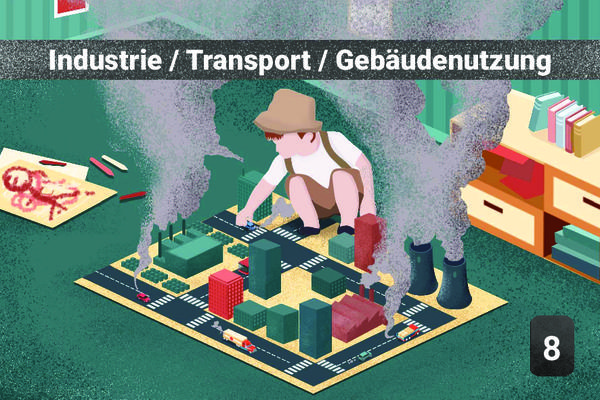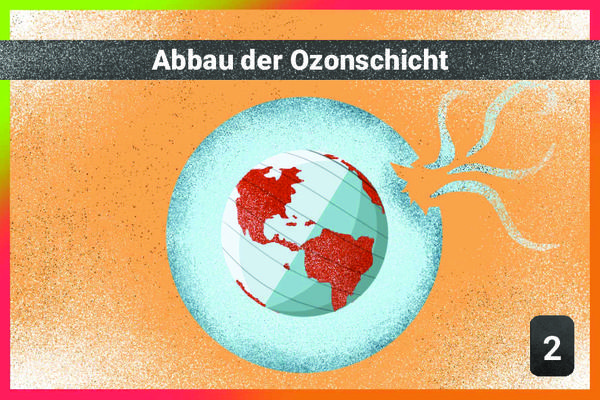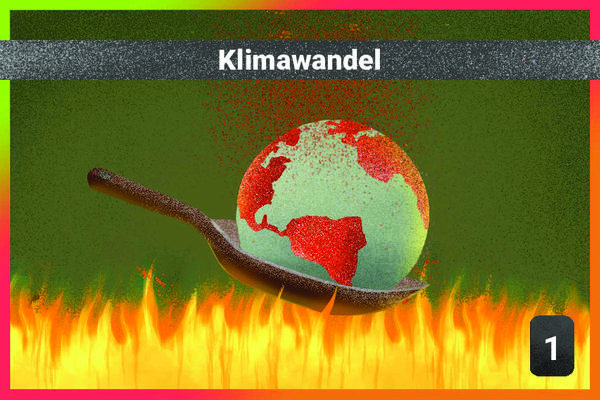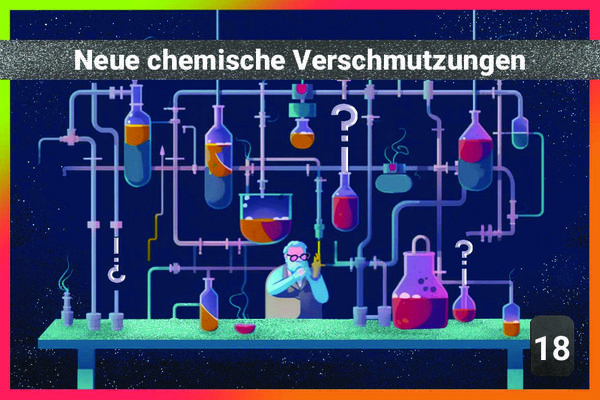10 - Use of chlorinated gases
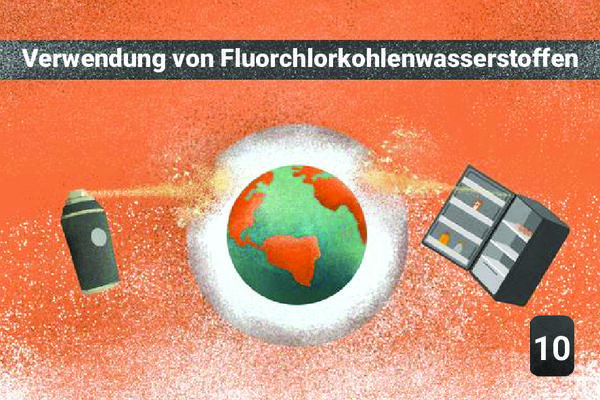
✏️ Diese Erklärung ist in deiner Sprache noch nicht verfügbar, Hier klicken um deine Übersetzung vorzuschlagen oder schreibe eine E-Mail an fdn.memo@marc-antoinea.fr.
Plastic production has almost doubled in 20 years globally. Plastic does not exist in its natural state, it is a product derived from petroleum. Since their creation, 79% of plastics have been thrown away (in landfill or in the environment).
1Ursache
Chlorinated gases are, for example, CFCs used in cooling systems (refrigerators, air conditioners, etc.), or as propellant gas in aerosol cans, not to be confused with "aerosols" (technical term) which are fine particles in suspended in the air. Chlorinated gases have been replaced by the use of fluorinated gases, which do not destroy the ozone layer.
1Auswirkung
Stratospheric ozone (which constitutes the ozone layer in the upper layers of the atmosphere between 20 and 40 km altitude), represents 90% of the ozone present in the atmosphere, and filters 97% of UVC rays . It is formed by the combination of a molecule of dioxygen (O2) with an isolated atom of oxygen (it is solar radiation which creates these isolated atoms by breaking the oxygen molecules in two). Chlorinated gases (like CFCs, used in particular as propellant gas in aerosol bombs) which reach the stratosphere are broken down by UV rays and release chlorine atoms which will react with ozone, transforming it into dioxygen.
Holes in the ozone layer were initially limited to Antarctica, before being observed on a smaller scale at the North Pole. Today, New Zealand and southern Australia, but also Canada and Scandinavia, regularly experience strong drops in stratospheric ozone in spring. Meteorological conditions are different between the South Pole and the North Pole, which could explain why the phenomenon is more marked in Antarctica (south) than in the Arctic (north). Particularly because there is more renewal of air masses at the north pole, while in the southern hemisphere, air currents "isolate" the air masses, resulting in less mixing, and therefore no ozone contribution from equatorial regions.
Governments decided to end the production of CFCs within the framework of the Montreal Protocol which came into force on January 1, 1989. They were replaced initially by HCFCs (which are less destructive of ozone), then by HFCs in a second step (they do not contain chlorine, therefore will not react with ozone).
2Andere möglichen Auswirkungen
CFCs (Chlorofluorocarbons) are GHGs, and therefore contribute to climate change. However, their overall impact is lower than that of CO2 / CH4 / N2O (although sometimes having a much higher GWP). Their replacements (HFC - Hydrofluorocarbon, which no longer contain Chlorine and are therefore no longer destructive of Ozone) are even more powerful GHGs than CFCs... This is why the Kigali Agreement in 2016 aims to reduce HFC emissions by 80-85% by 2036 to 2047 depending on the country. HFCs will gradually be replaced by hydrofluoroolefins (HFOs) with no impact on the ozone layer and much more limited greenhouse effects.
CFCs are new entities created by mankind. The link is optional, as they are no longer produced except in very small quantities and clandestinely in Asia. They do not exemplify the diversity and quantity of new entities currently being released. They are, however, an example of new entities that have had a real and undesirable effect on the functioning of the Earth system.

